PDFWAC 296-54-561
Guylines.
(1) Guylines must be used with any logging equipment when required by the equipment manufacturer.
(2) At least the minimum number and angle of guylines recommended by the equipment manufacturer must be used.
(3) Unless otherwise specified by the equipment manufacturer, guylines must be of the following sizes:
(a) In highlead logging, the head spar guylines must be equal in breaking strength to the mainline.
(b) In skyline logging, if the skyline is one and three-eighths inch or greater, the head spar guylines must be at least one and three-eighths inch. If the skyline is less than one and three-eighths inch, the head spar guylines must be equal in breaking strength to the skyline.
(c) On all other cable logging machines, the guylines must have a breaking strength at least equal to the mainline/skyline, whichever is largest.
(d) Tail/lift and intermediate support trees must be adequately guyed to withstand any stress to which the tree may be subjected.
(4) When guylines are required for spars they must be positioned according to Table 4: Guyline Positioning, or according to the manufacturer's specifications.
Table 4: Guyline Positioning
Number of Guys on Spar | Number of Guys Sharing Load | Positioning Figure Number |
1 | 1 | 4 - 1 Guyline Case |
2 | 2 | 5 - 2 Guyline Case |
3 | 3* | 6 - 3 Guyline Case |
2 | 7 - 3 Guyline Case (2) | |
4 | 2 | 8 - 4 Guyline Case |
5 | 2 | 9 - 5 Guyline Case |
3 | 10 - 5 Guyline Case (2) | |
6 | 2 | 11 - 6 Guyline Case |
3 | 12 - 6 Guyline Case (2) | |
7 | 3 | 13 - 7 Guyline Case |
8 | 2 | 14 - 8 Guyline Case |
4 | 15 - 8 Guyline Case (2) |
* | For metal spars designed to operate without snap guy |
(5) Guylines supporting metal spars must be made of plow steel or better material and must be maintained in good condition. Guylines for tail/lift and intermediate support trees may be made of synthetic material and must be used according to the manufacturer's recommendations.
(6) Load bearing guyline angles must be no greater than fifty degrees measured horizontally (See Figure 18: Maximum Angle for Load Bearing Guylines and Skyline). If suitable anchors are unavailable or the terrain is so steep that the guyline angle exceeds fifty degrees, an additional guyline must be rigged to oppose the load.
(7) Guylines must be kept securely tightened while the spar, tree, equipment or rigging they support is in use.
(8) Power driven devices must be securely anchored when used to tighten guylines. Holding such devices is prohibited.
(9) All trees that interfere with proper alignment, placement, or tightening of guylines must be fell.
EXCEPTION: | It is acceptable to use the base of a tree/stump or ground conditions to change the lead of a guyline for the purpose of keeping the guyline properly positioned. |
(10) Guylines must be hung in a manner to prevent a excessive bight or fouling when they are tightened.
(11) The use of loops or molles for attaching guylines is prohibited.
(12) The U part of shackles or sleeves must be around the guyline and the pin passed through the eye of the guyline.
(13) Splicing of guylines is prohibited except to make an eye splice.
(14) All spliced guyline eyes must be tucked at least three times.
(15) Extensions to guylines must be:
(a) Equal in breaking strength to the guyline to which they are attached; and
(b) Connected only by a shackle connecting two spliced eyes, pressed eyes or by double-end hooks. Connections must have at least one and one-half times the strength of the guyline.
(16) When hanging a block or jack on a guyline, only sleeve-type safety pin shackles must be used. The shackle sleeve will have not less than two and one-half times the line diameter bearing on the guyline.
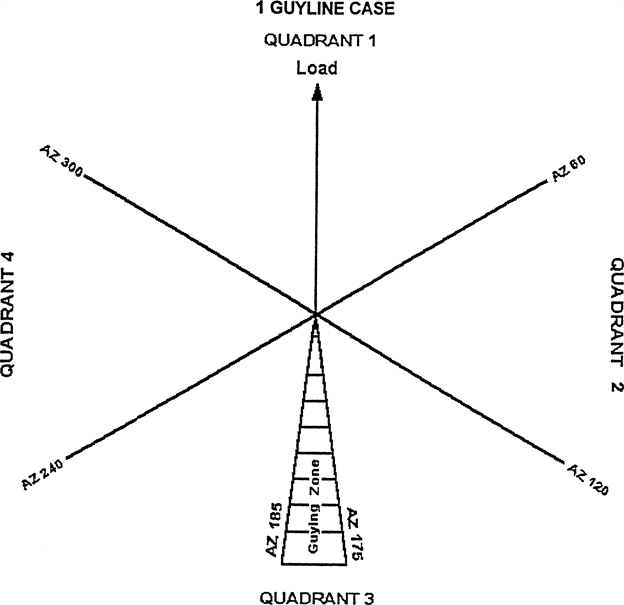 |
Figure 4: 1 Guyline Case |
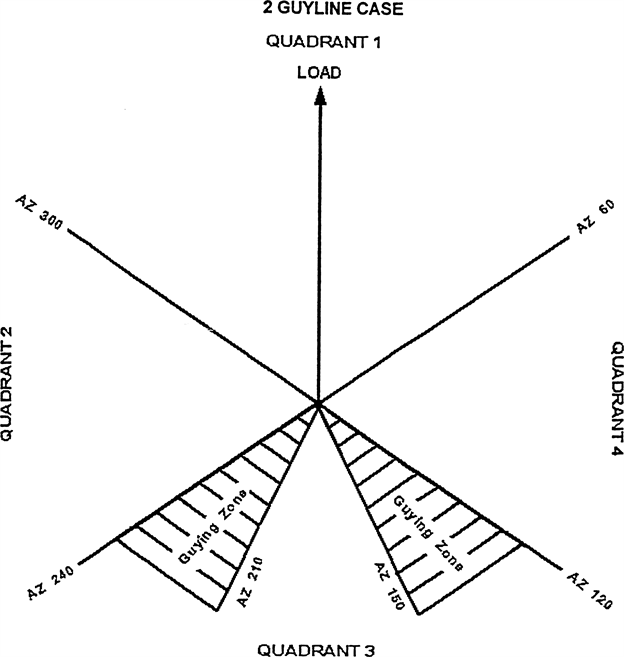 |
Figure 5: 2 Guyline Case |
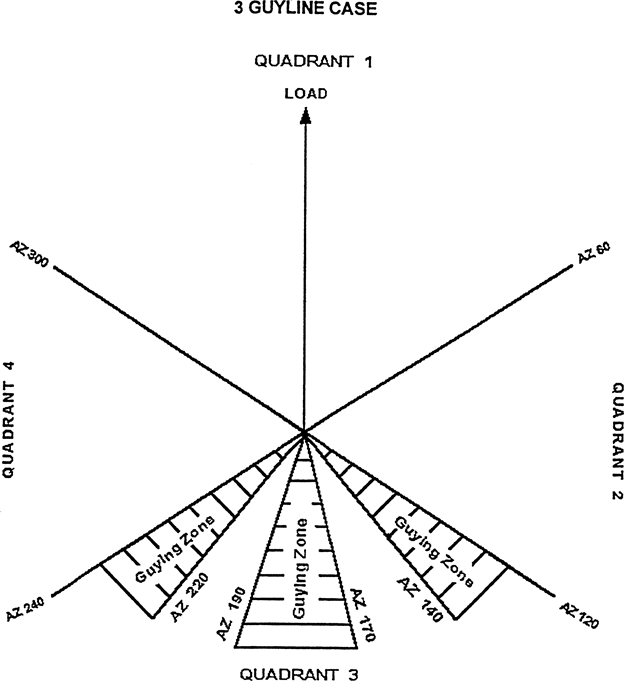 |
Figure 6: 3 Guyline Case |
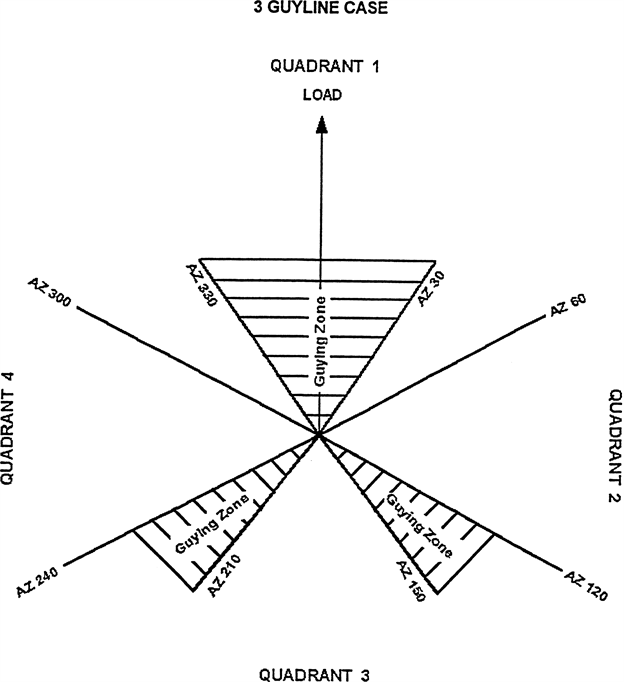 |
Figure 7: 3 Guyline Case (2) |
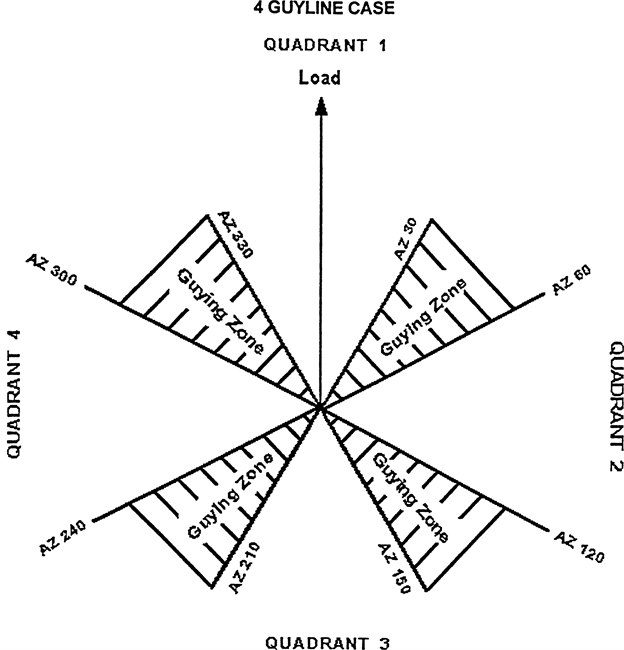 |
Figure 8: 4 Guyline Case |
 |
Figure 9: 5 Guyline Case |
 |
Figure 10: 5 Guyline Case (2) |
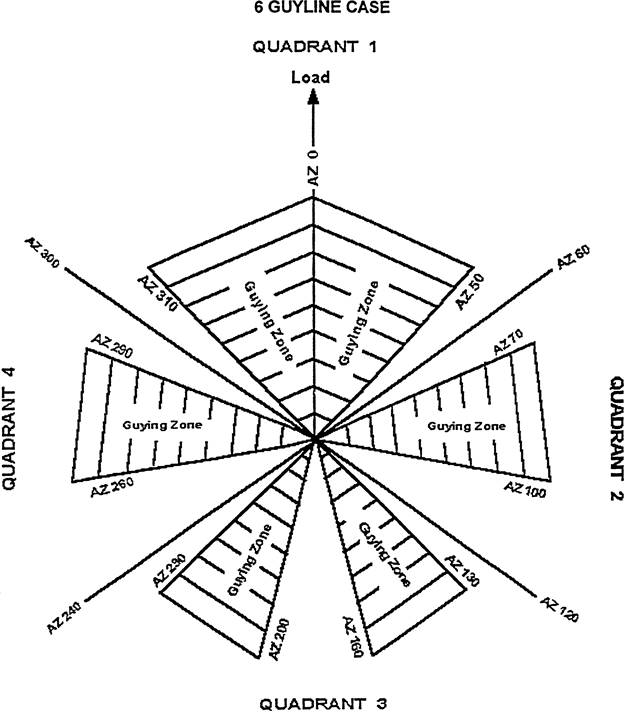 |
Figure 11: 6 Guyline Case |
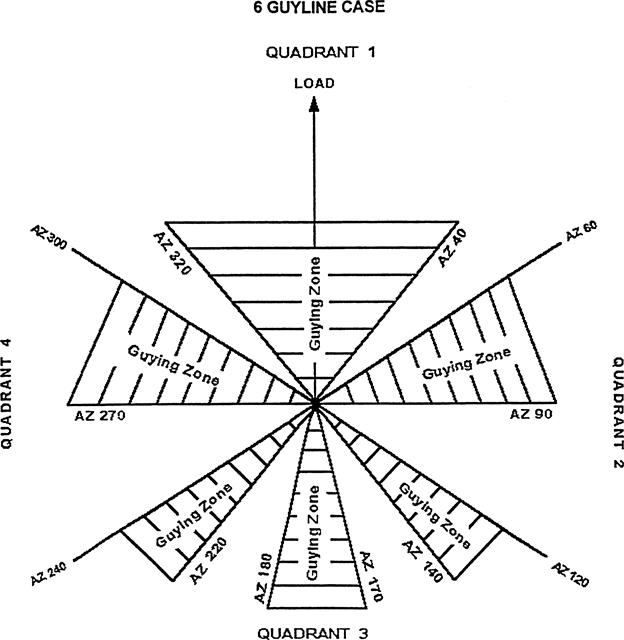 |
Figure 12: 6 Guyline Case (2) |
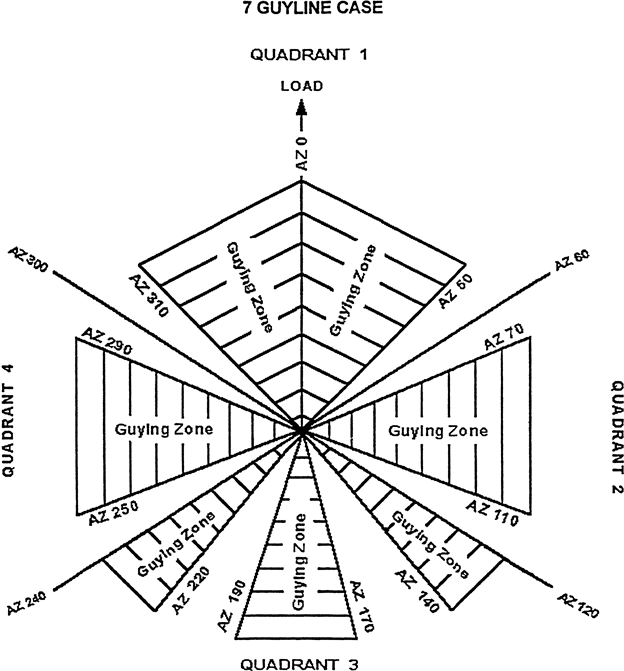 |
Figure 13: 7 Guyline Case |
 |
Figure 14: 8 Guyline Case |
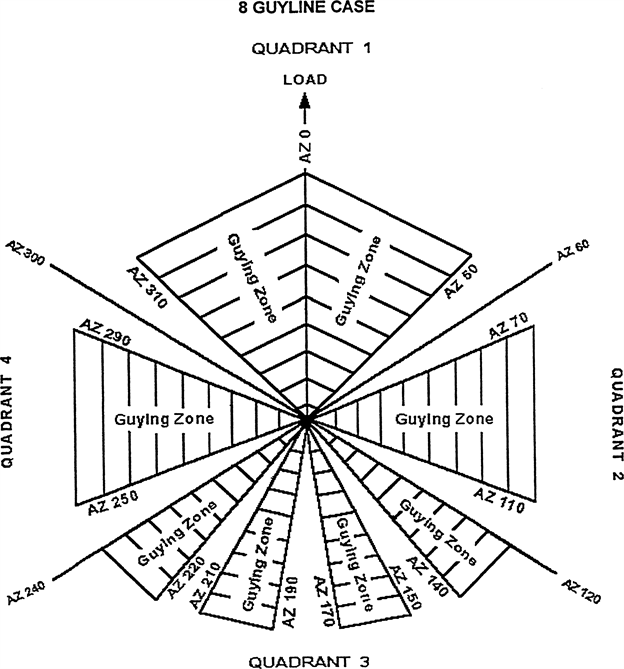 |
Figure 15: 8 Guyline Case (2) |
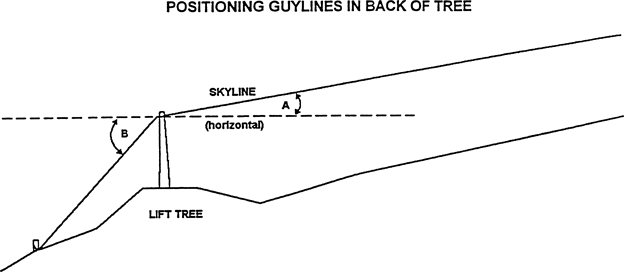 |
Figure 16: Positioning Guylines in Back of Tree |
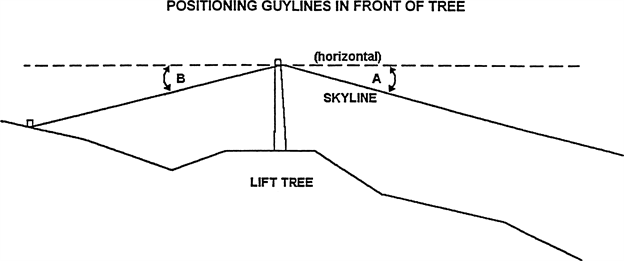 |
Figure 17: Positioning Guylines in Front of Tree |
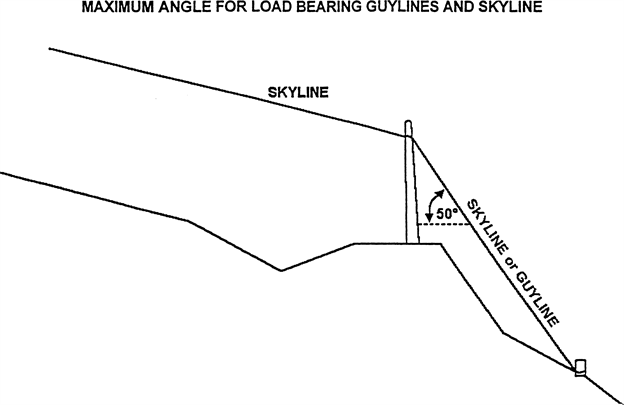 |
Figure 18: Maximum Angle for Load Bearing Guylines and Skyline |
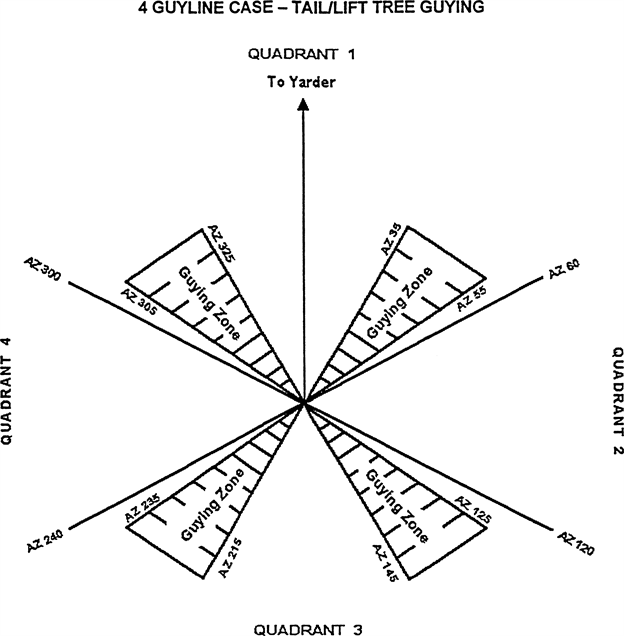 |
Figure 19: 4 Guyline Case - Tail/Lift Tree Guying |
 |
Figure 20: 2 Guyline Case - Tail/Lift Tree Guying (gravity outhaul, nonslackpulling carriage) |
[Statutory Authority: RCW 49.17.010, 49.17.040, 49.17.050, 49.17.060, and chapter 49.17 RCW. WSR 17-17-131, § 296-54-561, filed 8/22/17, effective 10/22/17. Statutory Authority: RCW 49.17.010, [49.17].040 and [49.17].050. WSR 99-17-117, § 296-54-561, filed 8/18/99, effective 12/1/99. Statutory Authority: RCW 49.17.040, [49.17].050 and [49.17].060. WSR 96-22-013, § 296-54-561, filed 10/28/96, effective 1/1/97. Statutory Authority: RCW 49.17.040, 49.17.150 and 49.17.240. WSR 79-10-081 (Order 79-14), § 296-54-561, filed 9/21/79.]